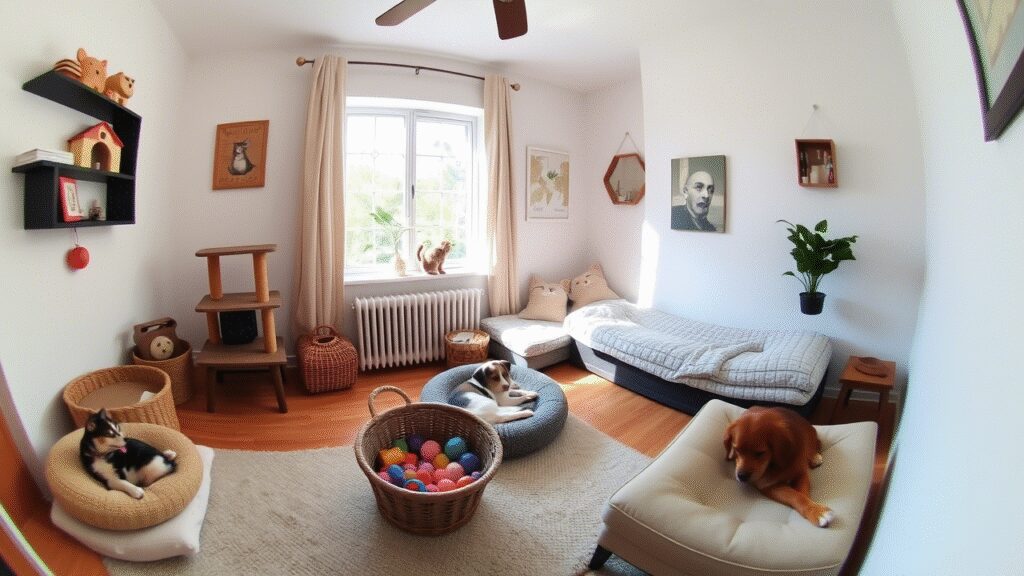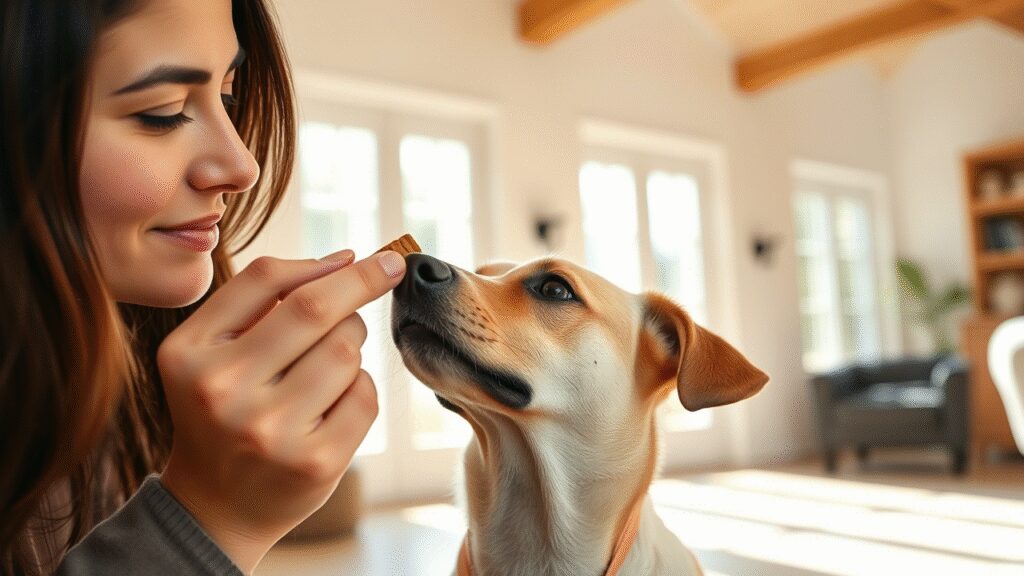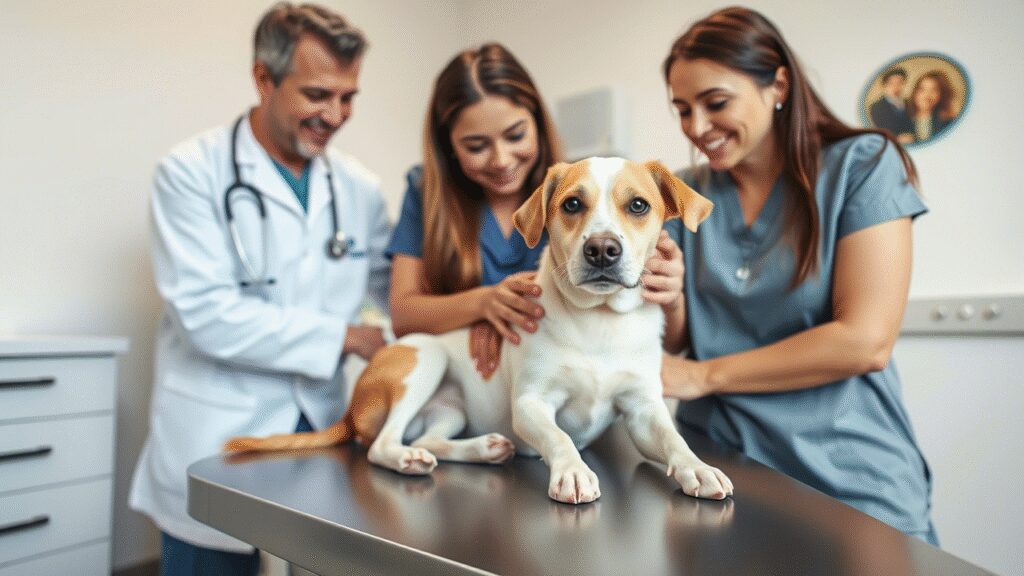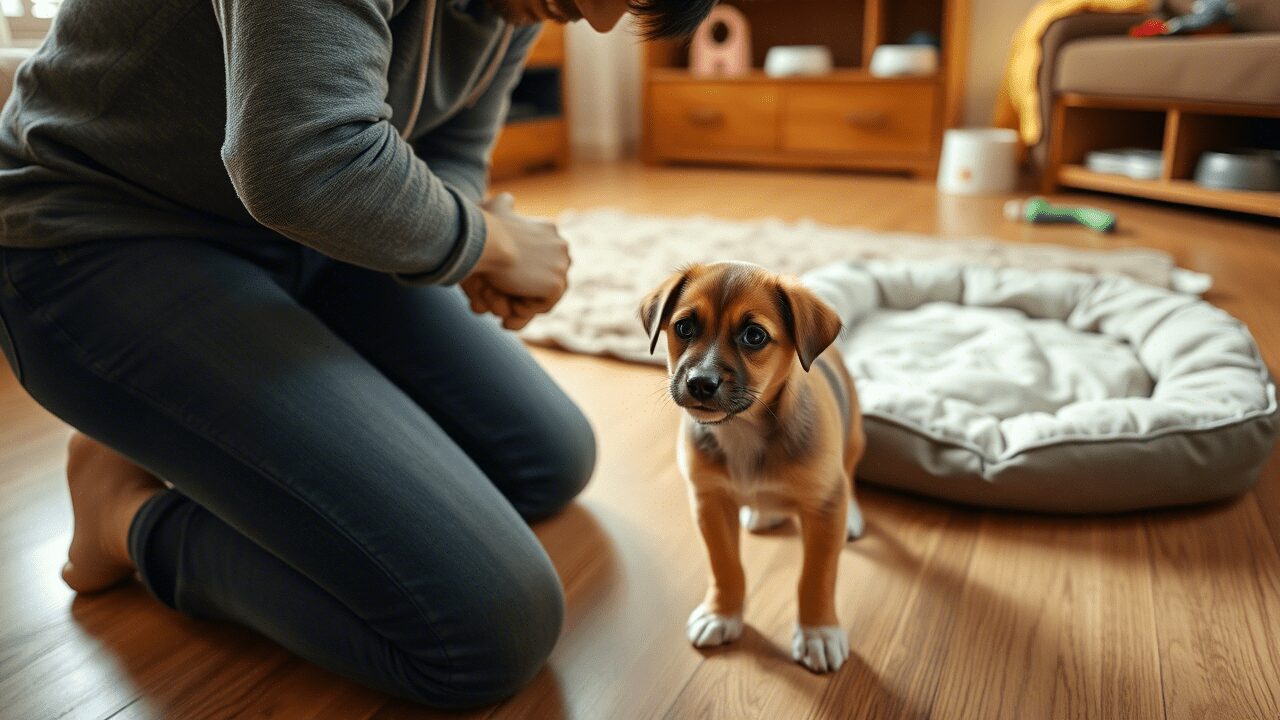Contents
- 1 The Essential Complete Guide to Pet Care for Beginners
- 1.1 Getting Started: The First Week with Your New Pet
- 1.2 Nutrition: Feeding Your Pet Properly
- 1.3 Health and Wellness: Keeping Your Pet Healthy
- 1.4 Training and Socialization: Building Good Habits
- 1.5 Grooming and Hygiene: Keeping Your Pet Clean
- 1.6 Understanding Pet Behavior: What Your Pet Is Telling You
- 1.7 Exercise and Enrichment: Keeping Your Pet Happy
- 1.8 When to Seek Help: Recognizing Problems Early
- 1.9 People Also Ask: Common Pet Care Questions
- 1.10 Conclusion: You’ve Got This!
- 1.11 References
The Essential Complete Guide to Pet Care for Beginners
Bringing home a new pet is exciting but kind of terrifying too. Trust me, I’ve been there. When I adopted my dog Max a few years back, I spent the first week googling everything from “how much food should a beagle eat” to “why is my dog staring at me while I sleep.” The good news? You’ll figure it out as you go. This guide should help with the basics though.
I’ve put together what I think is a pretty complete guide to pet care for beginners based on my own trial-and-error experiences (emphasis on the error part) and some actual professional advice I’ve picked up along the way. We’ll cover the important stuff like food, health, training, and all those little things nobody warns you about before you bring home your furry friend.
Getting Started: The First Week with Your New Pet
That first week is a blur. Your pet is adjusting to new surroundings, and you’re adjusting to having this living creature suddenly dependent on you for everything. Deep breaths. It gets easier.
Creating a Safe Space
Your new pet needs a spot to call their own. For my dog, it was his crate with a comfy bed inside. For cats, maybe a quiet corner with their litter box nearby and a soft place to sleep.
This safe space gives them somewhere to retreat when they’re feeling stressed or tired. My dog still goes to his crate when there’s a thunderstorm or when the vacuum cleaner comes out – it’s his personal sanctuary.
Not every pet adjusts at the same pace. Some will make themselves right at home on day one. Others might hide under your bed for a week. No pressure – let them set the timeline.

Essential Supplies Checklist
Before you bring your pet home, grab these basics:
- Food that’s right for their age and species
- Bowls for food and water (nothing fancy needed)
- A comfortable bed
- Collar with ID tag – seriously, don’t skip this
- Leash if you’ve got a dog
- Litter box and litter for cats
- A few toys – doesn’t have to be anything expensive
- Basic grooming stuff
- Pet-safe cleaning products for inevitable accidents
- Simple first-aid supplies
You don’t need to go broke buying premium everything. Save your money for the important stuff like quality food and proper identification.
Establishing Routines
Pets like knowing what to expect and when to expect it. Try to keep feeding times, walks, and play sessions somewhat consistent.
Here’s roughly what our daily routine looks like:
- Morning: Potty break as soon as we get up, breakfast, quick walk
- Midday: Another potty break, maybe a little training or play
- Evening: Dinner, longer walk, couch time, final bathroom trip before bed
Your schedule will look different based on your work hours and your pet’s needs. The important thing is finding a rhythm that works for both of you.
Nutrition: Feeding Your Pet Properly

The pet food aisle is overwhelming. There are so many options, and everyone has an opinion about what’s best. Here’s what I’ve learned through trial and error.
Choosing the Right Food
Not all pet foods are created equal. Some general guidelines that have worked for me:
- Look for a named meat as the first ingredient, not just “meat meal” or vague “animal by-products”
- Make sure it’s right for your pet’s stage of life (puppy/kitten, adult, senior)
- Check that it meets AAFCO nutritional standards – this should be on the label
I’m not going to wade into the wet food vs. dry food debate or grain-free vs. grain-inclusive. People get weirdly passionate about this stuff. Talk to your vet about what makes sense for your specific pet.
Feeding Schedule and Amounts

Most adult dogs do fine with two meals a day. Puppies usually need three or four smaller meals. Cats often prefer grazing throughout the day, which matches how they’d naturally hunt.
As for how much to feed – the guidelines on the package are just that, guidelines. You’ll need to adjust based on your pet’s activity level and metabolism. My dog gets slightly less than the package recommends because he’s, let’s say, enthusiastic about food and would happily eat himself into a perfect sphere if allowed.
Here’s a rough feeding guide for dogs:
| Dog Weight | Daily Food Amount | Activity Level Adjustment |
|---|---|---|
| 5-10 lbs | 1/2 – 1 cup | Add 1/4 cup for active dogs |
| 11-25 lbs | 1 – 2 cups | Add 1/3 cup for active dogs |
| 26-50 lbs | 2 – 3 cups | Add 1/2 cup for active dogs |
| 51-75 lbs | 3 – 4 cups | Add 3/4 cup for active dogs |
| 76+ lbs | 4+ cups | Add 1 cup for active dogs |
Take this with a grain of salt though. Your pet might need more or less.
The Water Question
Always have fresh water available. Change it at least once a day, more often if your pet is a messy drinker who leaves half their food floating in the bowl.
Some pets drink tons of water, others barely seem to touch it. My cat drinks so little that I sometimes wonder if she’s part cactus. That’s why the vet suggested I mix wet food into her diet.
Health and Wellness: Keeping Your Pet Healthy

Prevention beats treatment every time. Regular check-ups and basic health maintenance will save you money and stress down the road.
Finding a Good Veterinarian
Don’t wait until your pet is sick to find a vet. Ask around for recommendations, read reviews, and schedule a wellness visit pretty soon after bringing your pet home.
A good vet will:
- Actually answer your questions instead of rushing you
- Explain what they’re doing and why
- Give you prevention advice, not just treatment
- Try to make your pet comfortable during exams
I went through three vets before finding one who didn’t make my dog tremble with fear at every visit.
Vaccination Schedule
Puppies and kittens need a series of shots to protect them from nasty diseases. Adult pets need boosters to maintain immunity.
Core vaccines for dogs usually include:
- Rabies
- Distemper
- Parvovirus
- Adenovirus (hepatitis)
Core vaccines for cats usually include:
- Rabies
- Feline viral rhinotracheitis
- Calicivirus
- Panleukopenia
Your vet might recommend other vaccines based on your pet’s lifestyle and risk factors. My dog gets the Lyme disease vaccine because we hike a lot in tick-heavy areas.
Parasite Prevention
Fleas, ticks, heartworms, and various intestinal worms can make your pet miserable or even kill them. Year-round prevention is usually recommended, even in places with cold winters.
There are tons of options – topical treatments, oral medications, collars. Ask your vet what makes sense for your situation. I use a combination approach for my pets based on their exposure risks.
Spaying and Neutering
Unless you’re a responsible breeder with a plan, fixing your pet is generally a good idea. It prevents unwanted litters and can reduce certain health and behavior problems.
Most pets get spayed or neutered around 4-6 months of age, though some vets suggest waiting longer for certain large dog breeds. My vet had me wait until my large-breed dog was about 10 months old.
Training and Socialization: Building Good Habits
Training isn’t about teaching your dog to fetch you a beer from the fridge (though that would be nice). It’s about communication and making sure your pet can live happily in human society.
Basic Commands and House Rules
For dogs, start with these basics:
- Sit
- Stay
- Come when called
- Leave it
- Walking without pulling your arm off
For cats, focus on:
- Using the litter box consistently
- Scratching appropriate surfaces, not your new couch
- Coming when called for dinner (often the only command they’ll bother with)
Whatever rules you decide on, be consistent. If your dog isn’t allowed on the couch on Monday, don’t let him up there on Tuesday just because you’re feeling generous. You’ll just confuse the poor thing.
Positive Reinforcement Works Best
Modern training is about rewarding good behavior, not punishing mistakes. When your pet does something right, immediately let them know with praise, pets, or a small treat.
When they mess up, redirect them to something appropriate instead of yelling. My dog used to chew shoes, so I’d swap the shoe for a chew toy. Eventually he figured out what was fair game to chew and what wasn’t.
Socialization: Making a Well-Adjusted Pet
Exposing your pet to different people, animals, and situations when they’re young helps them grow up confident instead of fearful.
The prime socialization window is pretty short – about 3-14 weeks for puppies and 2-7 weeks for kittens. But continuing these positive experiences throughout their first year really helps.
Try to introduce them to:
- Different types of people (tall people, people with beards, kids, etc.)
- Various everyday sounds (vacuum, doorbell, cars)
- Different floor surfaces (tile, carpet, grass)
- Other friendly, vaccinated animals
I made a point of taking my puppy to outdoor cafes, hardware stores, and friend’s houses during his first few months. Now he’s comfortable pretty much anywhere.
Grooming and Hygiene: Keeping Your Pet Clean
Regular grooming keeps your pet comfortable and lets you spot potential problems early. Plus, it means less fur on your black pants.
Brushing Basics
Even short-haired pets benefit from brushing. It removes loose fur and distributes skin oils.
- Short-haired pets: Maybe once or twice a week
- Medium-coated friends: Probably 2-3 times weekly
- Long-haired pets: Pretty much daily, or they turn into walking mats
My long-haired cat requires daily brushing or she gets tangles that need to be cut out. My short-haired dog can go a few days between brushings.
Bath Time Tips
Dogs usually need baths every month or two, depending on how smelly they get. Most cats handle their own cleaning unless they get into something gross.
Use pet shampoo, not your fancy salon stuff. Human products can dry out their skin.
If your pet hates bath time, go slow and use lots of treats. My dog used to run and hide at the mere sound of running water. Now he tolerates baths because he knows cheese comes afterward.
Nail Care
Long nails can be uncomfortable for pets and can mess up their gait over time. If you hear clicking on hard floors, it’s trimming time.
Many pets hate nail trims with a burning passion. Go slow, reward heavily, and maybe enlist help. Or take them to a groomer or vet if it’s too stressful for both of you.
Dental Care
Bad teeth can lead to serious health problems for pets. Starting a tooth-brushing routine when they’re young is ideal.
Use pet toothpaste – the human stuff can make them sick. Aim for brushing several times a week if possible. Dental treats and toys can help too, but they’re supplements to brushing, not replacements.
My dog will let me brush his teeth, but my cat acts like I’m attempting murder. For her, we use dental treats and regular vet cleanings.
Understanding Pet Behavior: What Your Pet Is Telling You
Pets can’t talk, but they’re constantly communicating. Learning to read their body language helps you understand what they need.
Dog Body Language Basics
- Relaxed body, soft eyes, loose tail wag: Happy and content
- Stiff body, hard stare, raised fur along back: Alert or potentially worried
- Ears back, tail tucked, cowering: Scared
- Front end down, rear end up: “Let’s play!”
- Yawning when not tired, licking lips, looking away: Stressed or uncomfortable
My dog “smiles” when he’s guilty, showing all his teeth in what looks like a grin but is actually anxiety.
Cat Body Language Basics
- Upright tail with slight curve at top: Friendly greeting
- Puffed tail, arched back: Scared or threatened
- Slow blinks: “I trust you” (try blinking slowly back at them)
- Ears flat back: Angry or frightened
- Kneading with paws: Content, like a kitten nursing
My cat’s tail is basically a mood indicator – the more it twitches, the more annoyed she is.
Common Behavior Issues and Solutions
For Dogs:
- Excessive barking: Usually comes from boredom, fear, or territory defense. Figure out the trigger and work from there.
- Chewing everything: Provide appropriate chew toys and enough exercise.
- Pulling on leash: Use positive reinforcement and maybe a front-clip harness.
For Cats:
- Avoiding the litter box: Often means health issues, stress, or they hate the box. Check with your vet first.
- Destroying furniture: Get better scratching posts and use deterrents on furniture.
- Getting overstimulated during petting: Watch for twitching tail and learn when to stop.
Exercise and Enrichment: Keeping Your Pet Happy
Physical and mental exercise prevents boredom, and bored pets become destructive pets. Ask me how I know.
Exercise Requirements by Type
Dogs vary wildly in how much exercise they need:
- High-energy breeds like Border Collies or Huskies: 1-2 hours daily
- Medium-energy breeds like Beagles: 30-60 minutes daily
- Lower-energy breeds like Bulldogs: 20-30 minutes daily
Puppies need short bursts of activity with plenty of rest. Senior dogs need gentler, shorter sessions.
Cats exercise in spurts rather than sustained periods. Indoor cats need encouragement through play, though.
Mental Stimulation Is Just as Important
Mental exercise tires pets out effectively. Try:
- Food puzzles and treat-dispensing toys
- Short training sessions
- Hiding treats around the house
- Switching toys regularly to keep things fresh
A 15-minute training session sometimes tires my dog out more than a 30-minute walk.
Creating an Enriching Environment
Your home should let your pet do normal pet things:
For Dogs:
- Safe chewing options
- Opportunities to sniff and explore
- Places to dig if possible
For Cats:
- Climbing options like cat trees
- Multiple scratching surfaces
- Hiding spots
- Window perches for birdwatching
My cat’s favorite enrichment is actually an empty cardboard box, proving once again that pets are like toddlers who prefer the packaging to the expensive toy.
When to Seek Help: Recognizing Problems Early
Even with great care, pets get sick sometimes. Knowing when to call the vet matters.
Signs That Warrant a Vet Visit
- Big changes in eating or drinking habits
- Vomiting more than once, especially with blood
- Diarrhea lasting more than a day
- Straining in the litter box or on walks
- Coughing or breathing issues
- Unusual tiredness or behavior changes
- Limping or signs of pain
- New lumps or bumps
- Signs of infection like redness or discharge
When in doubt, call your vet. Better safe than sorry.
Common Health Emergencies
Some situations need immediate vet attention:
- Trouble breathing
- Seizures
- Severe bleeding
- Suspected poisoning
- Injuries from accidents
- Extreme pain
- Unable to pee (especially male cats)
- Overheating
- Very pale gums
Know where your emergency vet is located before you need them at 2 AM on a Sunday.
People Also Ask: Common Pet Care Questions
How much daily exercise does my dog really need?
It depends on your dog’s breed, age, and personality. Most adult dogs need about 30-60 minutes of activity daily, broken up into a couple walks or play sessions. High-energy breeds like Border Collies or Labs might need twice that, while some lazy breeds are done after a 15-minute stroll. Watch your dog – if they’re destroying stuff or bouncing off walls, they need more exercise. If they’re dragging during walks or slow to get up for activities, you might be overdoing it.
Is wet or dry food better for my pet?
Honestly, both can be good options. Many pets do best with a mix. Dry food is convenient, helps clean teeth somewhat, and stays fresh longer. Wet food provides more hydration, tastes better to most pets, and can be easier to eat for pets with dental issues. The quality of the food matters more than whether it’s wet or dry. I feed my pets mostly high-quality dry food with some wet food mixed in a few times a week. They seem happy with this arrangement.
How can I tell if my pet is at a healthy weight?
You should be able to feel your pet’s ribs without pressing hard, but not see them obviously (except maybe the last one or two). Looking from above, they should have a visible waist behind their ribs. From the side, their belly should tuck up from their chest. If you can’t feel ribs easily, they’re probably overweight. If ribs and hip bones are very visible, they’re underweight. My dog gained weight after neutering, and I didn’t notice until the vet pointed it out – sometimes we’re too close to see the gradual changes.
How often should I take my pet to the veterinarian?
Puppies and kittens need monthly visits at first for vaccines and development checks. Healthy adult pets usually need yearly checkups. Senior pets (generally over 7-8 years for dogs, 10+ for cats) benefit from twice-yearly visits since health problems can develop faster. Of course, also take them in whenever something seems off. I learned this lesson the hard way after ignoring what turned out to be an ear infection for too long.
What’s the best way to introduce my new pet to other pets at home?
Take it slow. Start by keeping them separated but able to smell each other under doors or through baby gates. Swap bedding between them so they get used to each other’s scent. For dogs, try a neutral territory meeting like a park. For cats, use gates or cracked doors for controlled visual contact. Always supervise early interactions and separate them if things get tense. It took three weeks of careful introductions before my resident cat stopped hissing at the new kitten. Now they’re best friends.
Conclusion: You’ve Got This!
There’s definitely a learning curve to pet parenthood, but you’ll get the hang of it. This complete guide to pet care for beginners covers the basics, but your pet will teach you what works best for them.
Focus on providing good food, regular vet care, enough exercise, consistent training, and lots of love. The rest you’ll figure out as you go.
Don’t be afraid to ask for help when you need it. Your vet, a trainer, or even that neighbor with the well-behaved dog can be great resources.
And remember to enjoy the journey! The middle-of-the-night accidents and chewed shoes are temporary, but the companionship lasts for years. I wouldn’t trade my furry family members for anything, even when they wake me up at 5 AM for breakfast or leave fur on every piece of clothing I own.
References
American Veterinary Medical Association. (2023). Pet Care Guidelines. Retrieved from https://www.avma.org/resources-tools/pet-owners/petcare
